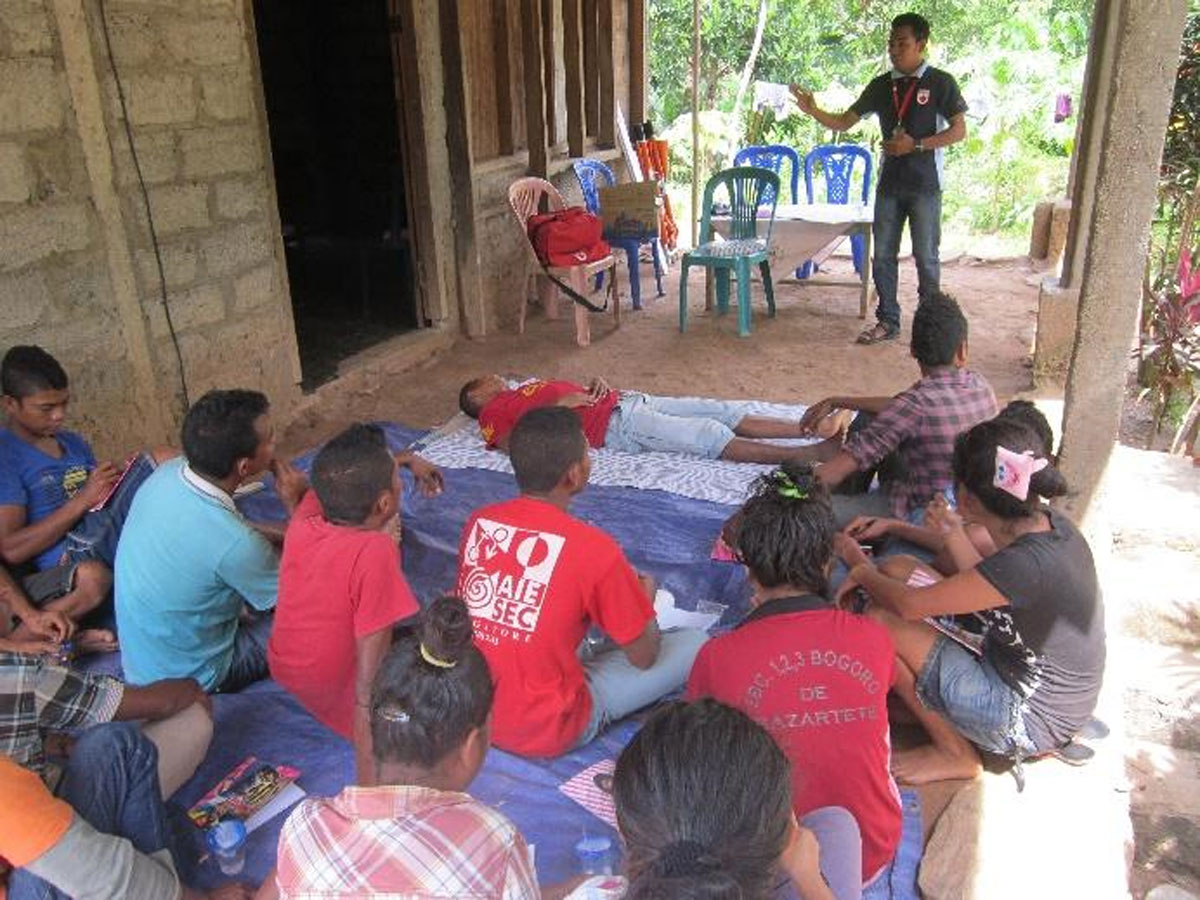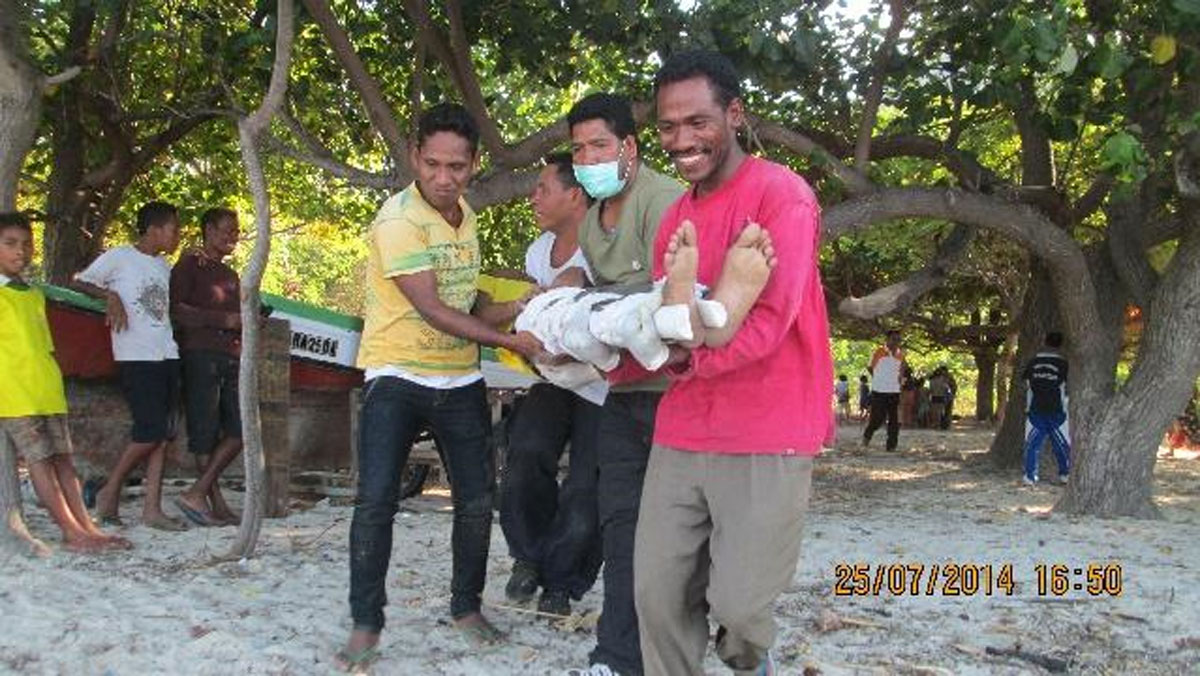Context
Approximately 90% of roads in Timor-Leste were rated as poor or very poor according to the 2011 Timor-Leste Strategic Development Plan 2011-2030. The majority of the population lives in rural areas with rugged mountainous terrain. There are increasingly frequent climatic events that cause landslides and swollen rivers which make roads impassable. Despite some international funding and improvements, this makes conditions very difficult to travel to nearby healthcare facilities. A published study (Price et al, 2016) found that geographic inaccessibility is the major barrier to reaching hospital for most people. If critical cases face long travelling times, then providing basic healthcare immediately with First Aid could be the difference between life and death.
Alongside this, ambulance services cover many districts and the services can be inadequate, with vehicles prone to malfunction. There can be long delays because patient transport may be on another call, unavailable out of hours or have inadequate staffing or fuel. Some rural patients may also feel sensitive to new surroundings, unfamiliar treatments, poor clinical services due to an under-resourced health system and poor professional standards of care from staff. They might also face unfair selection processes for receiving treatment, inadequate resources for equipment such as weight scales, blood pressure gauges, stethoscopes and basic testing kits. Having people trained in First Aid nearby who can provide lifesaving treatment in the absence of alternatives can help to overcome anxiety about healthcare services.
The Timor-Leste Red Cross, or Cruz Vermelha de Timor-Leste (CVTL) was established in 2000 and legally recognised as an auxiliary to the Timor-Leste Government through a decree law passed in 2005. CVTL has a network of 14 branches across all of the 13 municipalities in Timor-Leste. Its headquarters are located in the capital, Dili. CVTL’s mission is to abide by humanitarian values and the spirit of volunteerism to alleviate the suffering of the socially-excluded and economically-marginalized by promoting their health and socio-economic development and enhancing their capacity to prepare for and respond to disasters. CVTL has provided First Aid services at many events and has already trained thousands of people including volunteers in Timor-Leste.
Here’s what we’re doing
Initially, we assess communities by asking what they know, and what experience they have when they face any injuries in their family or communities/schools.
Then we give a brief interactive presentation using information from the topic summary, focused on recognising illness and injury and how to treat them.
Following this, we give a demonstration of how to give first aid when faced with an emergency situation. Actions include calling for help, checking for danger and making the scene safe before treating the ill or injured person.
Following the demonstration and instruction, we offer participants the opportunity to ask questions, and then to practise the techniques that have been taught (Figure 1).
Participants are encouraged to give each other feedback, and the Trainer must be prepared to observe, evaluate and give feedback to communities during their first aid practice. It is emphasised that the classroom is a safe space for learners to practise and to build their confidence. This education opportunity is not certificated. Learner adaptations include:
Using local materials in practising first aid techniques (Figure 2)
Using local dialect
Using posters or pictures of first aid basic care types
Using simple words
Learners include school pupils in rural areas, rural communities such as villages, and fishermen (Figure 3).
This is what happened
By including pre and post testing of learners and in-class simulation exercises, this approach to first aid education has enabled the Cruz Vermelha de Timor-Leste (Timor-Leste Red Cross) to observe enhanced volunteer knowledge and skills and increase the number of people able to provide first aid. Between 2008 and 2021 more than 35,000 community members were reached through this first aid education program. This approach has also increased numbers of volunteers assisting with events, doing promotions, promoting public awareness of the importance of first aid, and it has raised income through its commercial first aid operation which is a way to guarantee the sustainability of the organization.
However, some outcomes were not addressed as expected because of lack of community participation (people were too busy to engage), the community’s confidence to apply first aid, and the community’s access to the health facility to get professional medical treatment. The other critical issue was the limitation of funding support and promotion materials as an obstacle to achieving the expected outcomes. Following a mid-term and final evaluation of the program, the Cruz Vermelha de Timor-Leste will continue to promote awareness and to meet with communities and local leaders to identify next steps.
Questions for readers
What would be the best way to measure behavior change with this project? For example, direct observation, field visit, baseline and endline survey, midterm and annual evaluations, interviews, reporting, community feedback, case studies and success story.
How could we adapt it to a different population group eg elderly people? Perhaps we could collect information through caregivers, families, direct interviews with the beneficiaries, direct observation.
How could we reach more people with this education approach? Should we focus on promoting awareness of the Red Cross’s existence such as its vision, mission, fundamental principles, and the importance of first aid in daily lives, well-coordinated with the local authority to engage the community in participating in all our organization’s activities to be addressing the community needs.
Funding Information
CVTL First Aid activities were funded by the Japanese Red Cross Society from 2004–2021.
Competing Interests
The author has no competing interests to declare.
Publisher’s Note
This article was originally published displaying the submission date as 16 May 2022 and the acceptance date as 24 February 2023. This metadata was incorrect due to the article being added to the OJS3 system after a migration to a new publisher when it had already been through the review process. As of 05 October 2023, the data has been corrected to display the correct submission and acceptance dates.
References
1 Price, J. A., Soares, A. I., Asante, A. D., Martins, J. S., Williams, K., & Wiseman, V. L. (2016). “I go I die, I stay I die, better to stay and die in my house”: understanding the barriers to accessing health care in Timor-Leste. BMC Health Services Research, 16(1), 1–15. DOI: http://doi.org/10.1186/s12913-016-1762-2



